 W
WThe Apple Multimedia Lab was a pioneering electronic media research group operated by Apple Computer. It was founded in 1987 by cognitive psychologist Kristina Hooper Woolsey and educational psychologist Sueann Ambron.
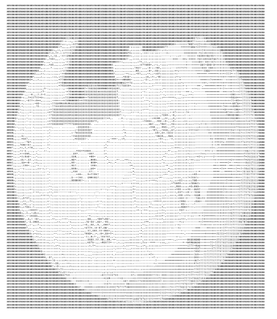 W
WASCII art is a graphic design technique that uses computers for presentation and consists of pictures pieced together from the 95 printable characters defined by the ASCII Standard from 1963 and ASCII compliant character sets with proprietary extended characters. The term is also loosely used to refer to text based visual art in general. ASCII art can be created with any text editor, and is often used with free-form languages. Most examples of ASCII art require a fixed-width font such as Courier for presentation.
 W
WAudio Video Bridging (AVB) is a common name for the set of technical standards which provide improved synchronization, low-latency, and reliability for switched Ethernet networks. AVB embodies the following technologies and standards:IEEE 802.1AS-2011: Timing and Synchronization for Time-Sensitive Applications (gPTP); IEEE 802.1Qav-2009: Forwarding and Queuing for Time-Sensitive Streams (FQTSS); IEEE 802.1Qat-2010: Stream Reservation Protocol (SRP); IEEE 802.1BA-2011: Audio Video Bridging (AVB) Systems; IEEE 1722-2011 Layer 2 Transport Protocol for Time Sensitive Applications ; and IEEE 1722.1-2013 Device Discovery, Enumeration, Connection Management and Control Protocol (AVDECC).
 W
WAudiovisual (AV) is electronic media possessing both a sound and a visual component, such as slide-tape presentations, films, television programs, corporate conferencing, church services, and live theater productions.
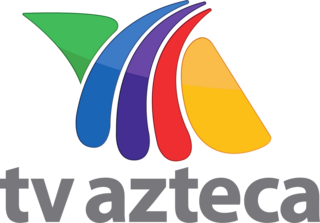 W
WTV Azteca, S.A.B. de C.V. is a Mexican multimedia conglomerate owned by Grupo Salinas. It is the second-largest mass media company in Mexico after Televisa. It primarily competes with Televisa and Imagen Televisión, as well as some local operators. It owns two national television networks, Azteca Uno and Azteca 7, and operates two other nationally distributed services, adn40 and a+. All three of these networks have transmitters in most major and minor cities.
 W
WA content delivery network, or content distribution network (CDN), is a geographically distributed network of proxy servers and their data centers. The goal is to provide high availability and performance by distributing the service spatially relative to end users. CDNs came into existence in the late 1990s as a means for alleviating the performance bottlenecks of the Internet, even as the Internet was starting to become a mission-critical medium for people and enterprises. Since then, CDNs have grown to serve a large portion of the Internet content today, including web objects, downloadable objects, applications, live streaming media, on-demand streaming media, and social media sites.
 W
WThe Core Pocket Media Player (TCPMP) is a software media player which operates on portable devices and Windows-based PCs. It is discontinued, but still available from the official mirror site. Supported operating systems include Palm OS, Symbian OS, and Microsoft Windows, CE, and Mobile. It is also available on Microsoft's Zune HD via a hack called Liberate. TCPMP also has hardware accelerated playback for ATI and Intel 2700G mobiles, such as the Tapwave Zodiac and Dell Axim X50v/X51V.
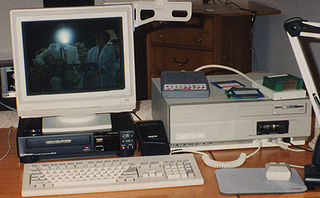 W
WDesktop video refers to a phenomenon lasting from the mid-1980s to the early 1990s when the graphics capabilities of personal computers such as Commodore's Amiga, the Apple Macintosh II and specially-upgraded IBM PC compatibles had advanced to the point where individuals and local broadcasters could use them for analog non-linear editing (NLE) and vision mixing in video production. Despite the use of computers, desktop video should not be confused with digital video since the video data remained analog. Full-screen, full-motion video's vast storage requirements meant that the promise of digital encoding would not be realized on desktop computers for at least another decade.
 W
WA digital media player is a type of consumer electronics device designed for the storage, playback, or viewing of digital media content. They are typically designed to be integrated into a home cinema configuration, and attached to a television and/or AV receiver.
 W
WEncyclopædia Britannica Ultimate Reference Suite is an encyclopaedia based on the Encyclopædia Britannica and published by Encyclopædia Britannica, Inc. It was published between 2003 and 2015.
 W
WFilmNet was the name used for several premium television channels in Europe during the 1980s, 1990s and 2000s. It was launched on 9 March 1985, broadcasting with a focus on Scandinavia, the Netherlands and the northern part of Belgium (Flanders). Filmnet channels were later launched in Poland and Greece.
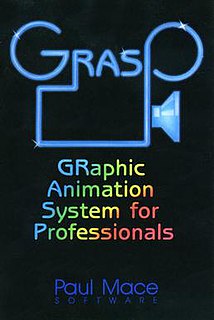 W
WGRaphic Animation System for Professionals (GRASP) was the first multimedia animation program for the IBM PC family of computers. It was also at one time the most widely used animation format.
 W
WFoung Hawj is an American media producer and politician who is a member of the Minnesota Senate. A member of the Minnesota Democratic–Farmer–Labor Party (DFL), he represents District 67, which includes the east side of Saint Paul in Ramsey County.
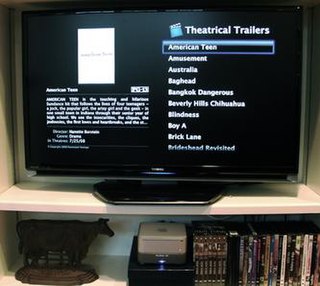 W
WA home theater PC (HTPC) or media center computer is a convergent device that combines some or all the capabilities of a personal computer with a software application that supports video, photo, audio playback, and sometimes video recording functionality. In recent years, other types of consumer electronics, including game consoles and dedicated media devices, have crossed over to manage video and music content. The term "media center" also refers to specialized application software designed to run on standard personal computers.
 W
WThe International Society for Music Information Retrieval (ISMIR) is an international forum for research on the organization of music-related data. It started as an informal group steered by an ad hoc committee in 2000 which established a yearly symposium - whence "ISMIR", which meant International Symposium on Music Information Retrieval. It was turned into a conference in 2002 while retaining the acronym. ISMIR was incorporated in Canada on July 4, 2008.
 W
WInview Technology is a UK-based digital TV software company. It specialises in advanced EPGs, interactive broadcast, IP services and solutions for Pay-TV and analogue switch off markets. Their OTT TV platform allows television broadcast and internet content to be simultaneously accessible to the viewer. The company is based in Northwich, Cheshire, UK and is privately owned.
 W
WMedia player software is a type of application software for playing multimedia computer files like audio and video files. Media players commonly display standard media control icons known from physical devices such as tape recorders and CD players, such as play, pause, fastforward, backforward, and stop buttons. In addition, they generally have progress bars to locate the current position in the duration of the media file.
 W
WMedia on demand (MOD) is a new generation of video on demand, which not only allows users to watch/listen video and audio content like movies and TV shows, but also provides functions including real-time information, interactive games, attractions guidance, route information, advertising system, shopping & ordering service. Users can select content whenever they want, rather than having to watch it at a specific broadcast time.
 W
WMicrosoft Interactive Media Manager (IMM) was a collaborative media management system that leveraged Microsoft Office SharePoint Server 2007 for a web-based workflow, including both in-browser management and playback UI. It also included a RDF and OWL based metadata framework to set up relationships between media assets and facilitate tracking and complex searches. It was discontinued in 2009.
 W
WThe notion of making media mobile can be traced back to the “first time someone thought to write on a tablet that could be lifted and hauled – rather than on a cave wall, a cliff face, a monument that usually was stuck in place, more or less forever”. In his book Cellphone, Paul Levinson refers to mobile media as “the media-in-motion business.” Since their incarnation, mobile phones as a means of communication have been a focus of great fascination as well as debate. In the book, Studying Mobile Media: Cultural Technologies, Mobile Communication, and the iPhone, Gerard Goggin notes how the ability of portable voice communication to provide ceaseless contact complicates the relationship between the public and private spheres of society. Lee Humphrey's explains in her book that now, "more people in the world today have a mobile phone than have an Internet connection".
 W
WMOD Technology is an advanced infotainment technology designed and licensed by FUNTORO. When it was first introduced in 2008, the technology was one of the most innovative and multifunctional system in the automotive industry. Currently, it is widely applied in railway, automotive & commercial industries with an aim to provide infotainment services through interactive monitors embedded in seatback or armrest.
 W
WMotion graphic design, also known as motion design, is a subset of graphic design in that it uses graphic design principles in a filmmaking or video production context through the use of animation or filmic techniques. Examples include the kinetic typography and graphics used in film and television opening sequences, and the spinning, three-dimensional station identification logos of some television channels. This art form has been around for decades, and has advanced in technical sophistication over time.
 W
WThe Multimedia PC (MPC) was a recommended configuration for a personal computer (PC) with a CD-ROM drive. The standard was set and named by the "Multimedia PC Marketing Council", which was a working group of the Software Publishers Association. The MPMC comprised companies including Microsoft, Creative Labs, Dell, Gateway, and Fujitsu. Any PC with the required standards could be called an "MPC" by licensing the use of the logo from the SPA.
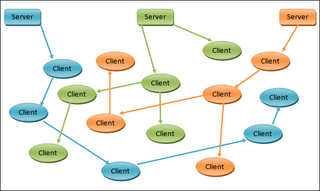 W
WP2PTV refers to peer-to-peer (P2P) software applications designed to redistribute video streams in real time on a P2P network; the distributed video streams are typically TV channels from all over the world but may also come from other sources. The draw to these applications is significant because they have the potential to make any TV channel globally available by any individual feeding the stream into the network where each peer joining to watch the video is a relay to other peer viewers, allowing a scalable distribution among a large audience with no incremental cost for the source.
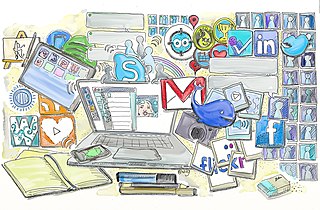 W
WPersonal media are media of communication which are used by an individual rather than by a corporation or institution. They are generally contrasted with mass media which are produced by teams of people and broadcast to a general population. In other words, personal media allow individuals, as opposed to corporate entities, to contribute knowledge and opinion to the public. The term dates from the 1980s.
 W
WSpoon is a social digital audio live streaming service. It is developed by Spoon Radio Inc., a South Korea-based company with a US office located in San Francisco, California. It allows users to listen to streamers and even start their own live streams using their smartphones and web, without any other equipment. It provides services in four languages, including South Korea, the United States, Japan, and Middle Eastern and North African regions.
 W
WStreaming television is the digital distribution of television content, such as TV shows, as streaming media delivered over the Internet. Streaming TV stands in contrast to dedicated terrestrial television delivered by over-the-air aerial systems, cable television, and/or satellite television systems. The use of streaming online video and streaming television is concentrated on streaming video on demand platforms such as Netflix, Tubi, Crackle, Hulu, Amazon Prime Video, HBO Max, Vudu, Peacock, Disney+, Apple TV+, BET+, and Paramount+.
 W
WA trailer is a commercial advertisement for a feature film that will be exhibited in the future at a movie theater/cinema, the result of creative and technical work. The term "trailer" dates back to the distribution of movies on reels of film. The reels were always distributed un-rewound. Therefore, the end of the movie was the most accessible part, to which previews were spliced, "trailing" the film.
 W
WA TV gateway is a television headend to a network UPnP router that receives live digital video broadcast (DVB) MPEG transport streams (channels) from terrestrial aerials, satellite dishes, or cable feeds and converts them into IP streams for distribution over an IP network.
 W
WVisual technology is the engineering discipline dealing with visual representation.
 W
WVolume Logic was commercial software which added audio enhancement features to media players. Originally released by Octiv Inc. in 2004, it was the first plug-in for Apple's iTunes for Mac and Windows. In April 2005, the Octiv corporation was acquired by Plantronics.